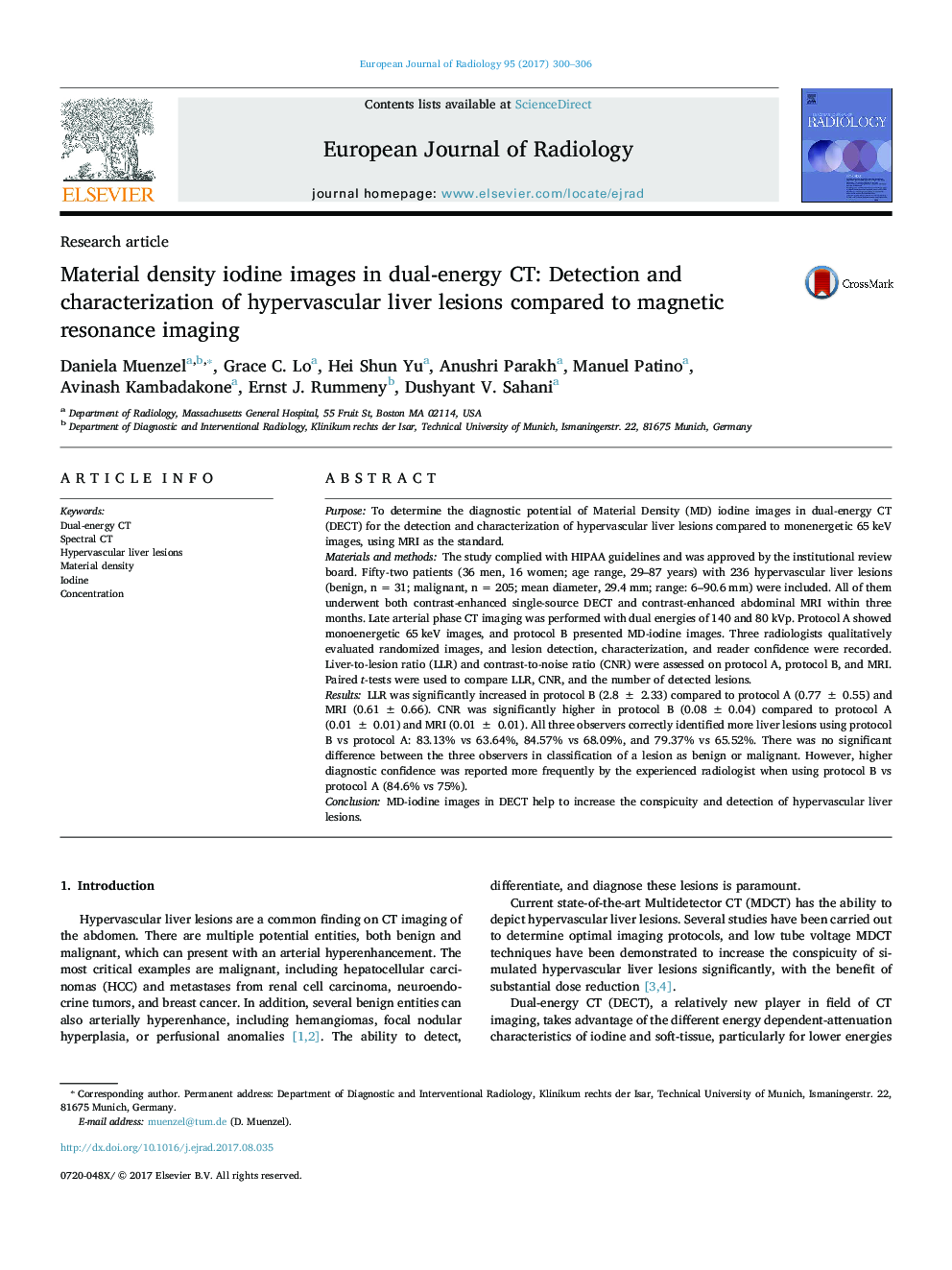| کد مقاله | کد نشریه | سال انتشار | مقاله انگلیسی | نسخه تمام متن |
|---|---|---|---|---|
| 5726000 | 1609725 | 2017 | 7 صفحه PDF | دانلود رایگان |
PurposeTo determine the diagnostic potential of Material Density (MD) iodine images in dual-energy CT (DECT) for the detection and characterization of hypervascular liver lesions compared to monenergetic 65 keV images, using MRI as the standard.Materials and methodsThe study complied with HIPAA guidelines and was approved by the institutional review board. Fifty-two patients (36 men, 16 women; age range, 29-87 years) with 236 hypervascular liver lesions (benign, n = 31; malignant, n = 205; mean diameter, 29.4 mm; range: 6-90.6 mm) were included. All of them underwent both contrast-enhanced single-source DECT and contrast-enhanced abdominal MRI within three months. Late arterial phase CT imaging was performed with dual energies of 140 and 80 kVp. Protocol A showed monoenergetic 65 keV images, and protocol B presented MD-iodine images. Three radiologists qualitatively evaluated randomized images, and lesion detection, characterization, and reader confidence were recorded. Liver-to-lesion ratio (LLR) and contrast-to-noise ratio (CNR) were assessed on protocol A, protocol B, and MRI. Paired t-tests were used to compare LLR, CNR, and the number of detected lesions.ResultsLLR was significantly increased in protocol B (2.8 ± 2.33) compared to protocol A (0.77 ± 0.55) and MRI (0.61 ± 0.66). CNR was significantly higher in protocol B (0.08 ± 0.04) compared to protocol A (0.01 ± 0.01) and MRI (0.01 ± 0.01). All three observers correctly identified more liver lesions using protocol B vs protocol A: 83.13% vs 63.64%, 84.57% vs 68.09%, and 79.37% vs 65.52%. There was no significant difference between the three observers in classification of a lesion as benign or malignant. However, higher diagnostic confidence was reported more frequently by the experienced radiologist when using protocol B vs protocol A (84.6% vs 75%).ConclusionMD-iodine images in DECT help to increase the conspicuity and detection of hypervascular liver lesions.
Journal: European Journal of Radiology - Volume 95, October 2017, Pages 300-306
